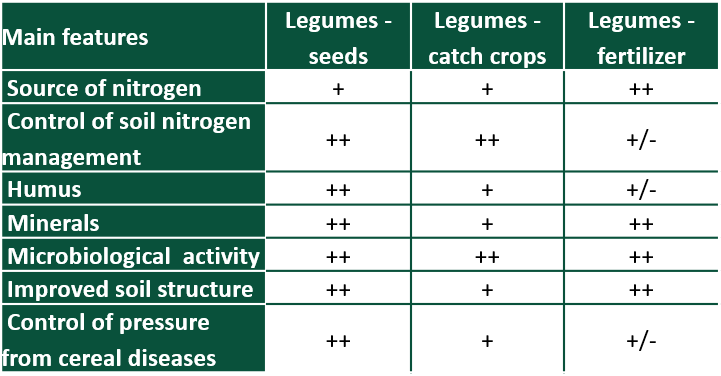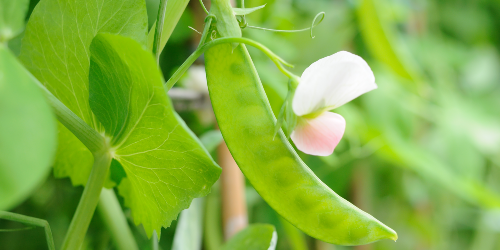Legumes are a very diverse group of plants known since antiquity. The first legume species were domesticated nearly 8-10 thousand years ago and they have been used by the population as a source of valuable protein ever since. Over the past few years, the area of crops occupied by these plants has been systematically growing; this is not only due to the favorable impact of legumes on the improvement of soil structure, but also to the requirements of Integrated Plant Production and the subsidies that farmers can obtain from the EU for the production of this group of plants.
Legumes are grown for seeds, concentrated feed for animals and green matter. They are characterized by different nutritional, soil and water requirements. When undertaking the cultivation of this group of plants, one should remember about the considerable importance they play in fertilizing soil, improving its structure and physical properties as well as fertility. Legumes live in symbiosis with bacteria that assimilate free atmospheric nitrogen; thanks to this property they enrich the soil with this nutrient (e.g. peas leave 40-60 kg N/ha) and use nitrogen for their own growth processes. Legume harvest residues enrich the soil with humus and potassium (approx. 35 kg/ha) and phosphorus (25 kg/ha), and the roots of legumes reduce soil degradation.
Table 1. Role of legumes in shaping soil fertility (Grzebisz, 2012).

Due to their ability to fix atmospheric nitrogen, legumes do not require high fertilization with this component, although a small dose of nitrogen used with foliar fertilization brings satisfactory results in the form of an increase in the seeds' protein content. Most legumes grown in Poland are plants with a relatively short growing season (the exception is soybean, which is harvested at the turn of September/October, depending on the region of our country). The length of the growing season, as well as the flowering time falling in months with a limited amount of rainfall (June-July) determine the need for foliar nutrition, especially in production plantations.
Factors determining the length of the vegetation period in legumes:
- the sum of effective temperatures during the growing season,
- temperature in critical stages,
- day length.
The first foliar feeding should be carried out during the vegetative growth stage with the use of MAXIMUS Platinum extra PKMg at a dose of 3 kg/ha and MAXIMUS extra ZnBMg at a dose of 2 kg/ha. The first nitrogen-free fertilizer used in the process provides plants with two macronutrients - phosphorus and potassium, which are important in the development and formation of the root system. The role of phosphorus in this period is to control the efficiency of the mechanisms responsible for the reduction of N2 and to stimulate the plant to produce an extensive root system with a greater number of root nodules. Potassium is responsible for regulating the size of the root system and affects the processes of photosynthesis and carbohydrate accumulation. The addition of boron and zinc contained in MAXIMUS extra ZnBMg has a positive effect on the formation and functioning of root nodules and contributes to a better development of the root system. The next foliar treatment takes place in the stage before flowering. During this period, we also recommend using MAXIMUS Platinum extra PKMg at a dose of 3 kg/ha and MAXIMUS extra ZnBMg at a dose of 2 kg/ha. The phosphorus contained in MAXIMUS Platinum extra PKMg increases the efficiency of the formation of side shoots, flower buds and pods, and potassium controls the water balance during the flowering period, which translates into a greater number of pods and seeds per pod. The addition of micronutrients has a positive effect on the entire process of flowering and bud setting. Molybdenum contained in EKOLIST mono Molybdenum is a very important micronutrient for legumes. In legume crops, EKOPLON recommends using this fertilizer in the amount of 0.4-0.8 l/ha, depending on the soil class. Plants properly nourished with molybdenum produce a lot of root nodules, flowers and pods.
Fertilization technologies
Taking into account the different expectations of farmers in terms of crop nutrition, we have prepared for you three complete proposals for foliar fertilization.
The following technologies have been prepared in response to these expectations, in order to optimally nourish the crop and are for reference. If you have any questions regarding the details of the technology and the adjustment of the individual dosage of the indicated products, we invite you to contact our Team.
















